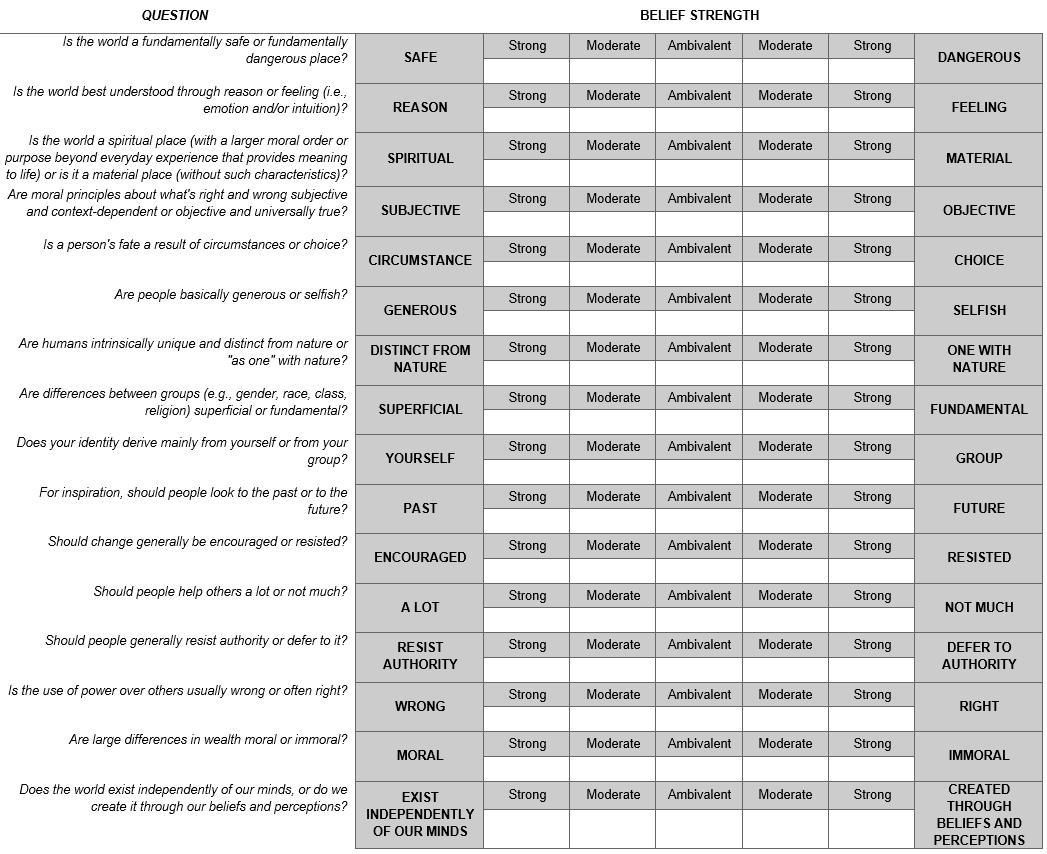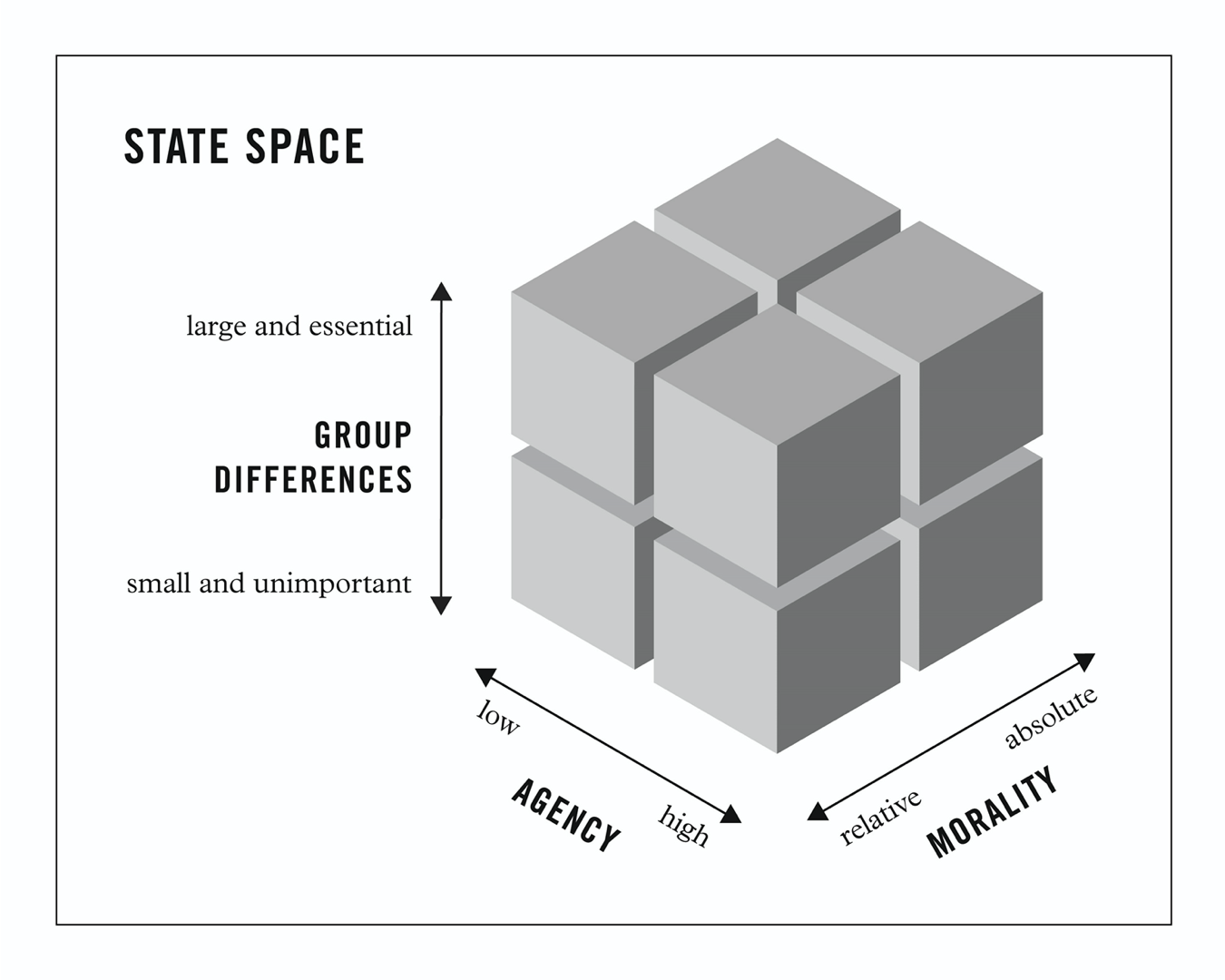IDEOLOGICAL STATE SPACE
Ideological State-space (ISS) modeling
This method, developed by Cascade Institute director Thomas Homer-Dixon, allows researchers to identify and analyze key differences between worldviews. It exploits the idea of a state space, which is a picture, much like a three-dimensional map, of all possible states of a system. In this case, the position of a given political-economic worldview is plotted on fifteen distinct dimensions. Each dimension is a continuum of possible answers to a single question that most worldviews commonly address, such as “Are differences between human groups large and essential or small and unimportant?” and “Are moral principles relative (subjective) or absolute (objective)?” Taken as whole, this high-dimensional space allows researchers to judge the cognitive distance between worldviews, map possible migration pathways between them, and identify previously unrecognized worldviews.
The 16 dimensions of the ISS

Reference:
Thomas Homer-Dixon, “Mindscape,” Chapter 18 of Commanding Hope: The Power We Have to Renew a World in Peril (Toronto: Knopf Canada, 2020), pp. 298-320.

